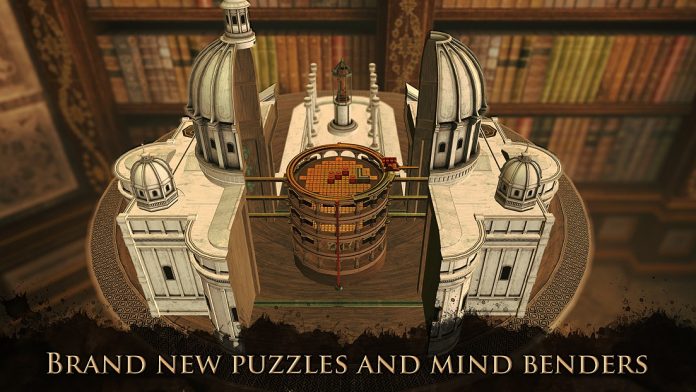The House of Da Vinci 3 is the grand finale to one of the most acclaimed trilogies of recent years.
Set in renaissance Italy, and featuring a cast of historical notables (including Leonardo Da Vinci), the game is a moody, elaborately crafted environmental puzzler with a twist.
The twist is that you can travel through time, using an ingenious machine called the Oculus Perpetua.
Over the years The House of Da Vinci games have drawn comparisons with The Room, Fireproof Games’s acclaimed puzzle game series. It’s a lazy comparison, though, failing to take into account the richly drawn historical setting, the colorful cast of characters, and the complex storyline.
The House of Da Vinci 3 sees you playing as Giacomo, apprentice to the master himself, and it begins where the previous game left off.
Giacomo has just been attacked by goons and fallen into a catacomb. To make matters worse, his Oculus Perpetua is in pieces, and those pieces are scattered all over the damn place.
The stage is set for some magic-infused renaissance brainteasers, culminating in an epic finale.
Don’t worry if you missed out on the first two games. In a recent interview [link], Martin [surname] of Blue Brain Games insisted that The House of Da Vinci 3 is actually the perfect place to start.
“It’s definitely pick up and play”, he said, adding, “Personally I would recommend starting with the House of Da Vinci 3, moving the first and second part and replaying the grand finale again. This way you’ll play the most recent game first, but you’ll also be able to enjoy the story behind the trilogy”.
Those puzzles will probably be a bit more straightforward the second time around, too.
The first two games in the House of Da Vinci series are bonafide critical hits, with an average user rating of 4.8 across both titles. So far The House of Da Vinci 3 seems to have pulled off the impossible feat of improving on those scores.
At the time of writing, the game has an average user rating of 4.9, from thousands of reviews.
Blue Brain Games clearly knows how to do sequels the right way. This is partly down to the success of the first game in the series, which has enabled the team to expand.
For instance, this third entry is by far the best-looking, with heaps of detail and a solid aesthetic that just, in Martin [surname]’s words, “clicks together”.
The studio has also found itself in a position to approach collaborators like Qntal, the popular “electro-medieval” band. It goes without saying that a slick, professionally produced soundtrack goes a long way towards building a compelling gameworld.
As does having a genuine passion for renaissance history, and for settings like Rome, the Pope’s palace, and the Caste Del Monte. “We have visited many of these locations personally,” says Martin, “and … we’ve been able to recreate it in a stunning and genuine way to keep players hooked”.
The success of The House of Da Vinci 3 is also a result of the choices Blue Brain Games made along the way, such as the decision to make this a premium paid title.
“From the player’s point of view, The House of Da Vinci is a type of game where you don’t want to be disturbed and bothered by ads popping up from every side of your screen”.
Amen.
“It has a delicate atmosphere and you need to be 100% focused to solve each of many 3D puzzles and riddles.”
Double amen.
The House of Da Vinci 3 is available right now on the App Store.
Versions for Android, PC, Mac, and Switch will be along shortly.












